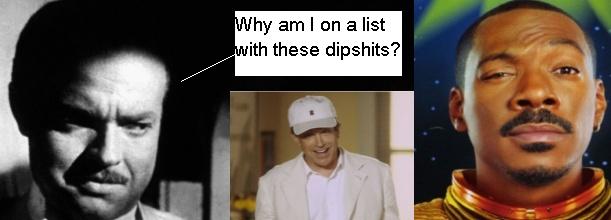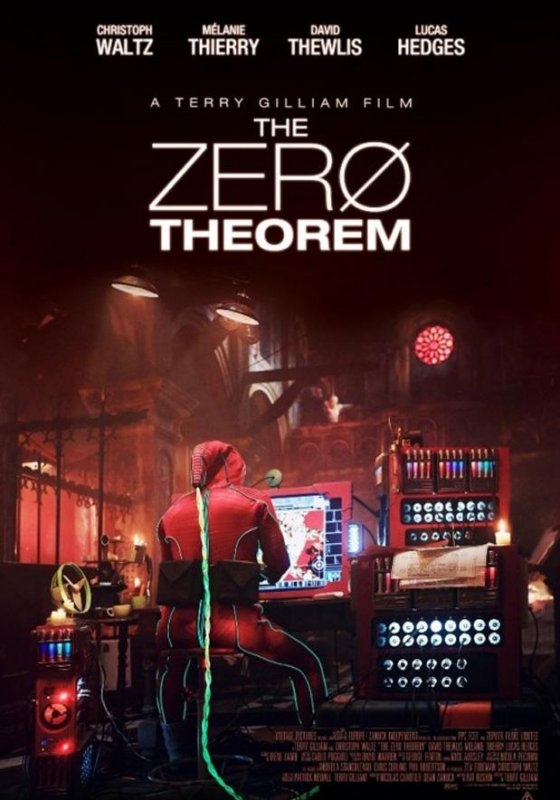Top 10 Surprise Box Office Flops

What, historically speaking, were the most surprising films to flop at the box office? Not, you understand, the biggest money losers but, rather, the movies which looked all set to rake in the cash hand over fist but then… just… didn’t. While everyone on the planet (save a few weird-eyed, litigious devotees in Gold Base, California) knew that Battlefield Earth was going to nosedive into oblivion, far fewer people would have predicted J.C.’s stumble through its opening weekend.
In that vein we present the ten box office flops which caught people unprepared. Do note that these “flops” are being measured purely by their BOX OFFICE takings on initial cinema release, meaning many went on to gross all kinds of crazy cash through royalties, merchandising, soundtracks and video and DVD sales (as John Carter may well still do). Some of them even went on to be stone cold classics (as John Carter probably won’t) but they were all misses in their day. Let’s all do the flop…
#10. Town and Country
(Dir: Peter Chelsom, 2001)
Though Warren Beatty is no stranger to flopping (see number 2), his 2001 romantic comedy caused surprise on its release by just how absolutely it managed to fail commercially. It had Beatty in the lead role, his stock up for the first time since the early 80’s after the subversively comic Bulworth. It had at its helm Peter Chelsom, who had made his name with the warmly received The Mighty. It boasted a muscular cast list including Diane Keaton, Goldie Hawn, Garry Shandling, Charlton Heston and Andie MacDowell. Surely a film with that much star power wouldn’t fall on its face? It went on to lose nearly 100 million dollars at the box office. So what went wrong? Well, it was awful obviously. So bad was the reaction to Town and Country, in fact, that the majority of the cast did not appear in a feature for some time afterwards.
#9.The Adventures of Pluto Nash
(Dir: Ron Underwood, 2002)
Of course, nobody expected Pluto Nash to be good. “Good” wasn’t the point. For years its star Eddie Murphy had been making films that lived several continents away from “good” which still managed to amass incredible box office numbers (The Nutty Professor, Doctor Doolittle, Daddy Day Care). Yet Pluto Nash did not follow suit, its combination of weak humour, hideous special effects and deeply lazy story turning off even the most easily amused of audiences . It made back just 7 million of its $100 million budget, making it one of the biggest bombs in Hollywood history.
8. Bringing Up Baby
(Dir: Howard Hawks, 1938)
Though it is the first of 3 films on the list which fit into the “flop turned classic” category, legends of how much of a commercial disaster Bringing Up Baby actually were have been somewhat exaggerated. The screwball comedy’s struggle to break even on release was, however, a big disappointment to the studio heads at RKO who responded by firing Hawks from his next job with the company. While leading man Cary Grant came out unscathed, his co-star Katharine Hepburn was not so lucky. This was one in a long line of flops which helped earn Hepburn the sobriquet “Box Office Poison”.
#7. The Adventures of Rocky and Bullwinkle
(Dir: Des McAnuff, 2000)
Who are Rocky and Bullwinkle? I have no idea but apparently their charming cartoon carry on had been entertaining American children for the best part of half a century when McAnuff’s film hit the screens. With a cast and cameo list including some of Hollywood’s biggest names (Robert De Niro, John Goodman, Jason Alexander, Whoopi Goldberg, Carl Reiner, er, Kenan and Kel) expectations were high for the feature length instalment. They were not met. Disliked by critics and with zero appeal outside its native country Rocky and Bullwinkle failed to make back even half of its $70 million budget.
#6. The Legend of Bagger Vance
(Dir: Robert Redford, 2000)
Despite having one of the silliest sounding titles of recent memory, nobody was expecting Bagger Vance to tank. After all, it starred Will Smith, Matt Damon and Charlize Theron, all of whom were hot property and Redford had only one flop (The Milagro Beanfield War) on his directing record. Audiences were ready to be inspired by Bo-Bo Redford’s tale of a struggling young golfer being inspired by a magical caddy companion. On release, however, it was met with scathing, hateful criticism from the press and public alike, who saw the depiction of Smith as a “super, magical negro” at best embarrassing and, at worst, nastily patronising.
5. It’s a Wonderful Life
(Dir: Frank Capra, 1946)
By 1946 Frank Capra had been entertaining and inspiring Americans for 30 years with classics like Mr. Smith Goes to Washington, It Happened One Night and Meet John Doe. James Stewart may well have been the nation’s favourite actor, loved both for his sterling every-man performances and service to the military during WW2. All of which makes the initial failure of their third collaboration which came out that year even more surprising. Of course, now we all know it as Capra’s most daring, most emotional and darkest work but on release it only just about scraped back its $3 million budget.
#4. Heaven’s Gate
(Dir: Michael Cimino, 1980)
Yes, yes, the benefit of hindsight makes us all terrifically smart and we all know that allowing a director to have the kind of unquestioned freedoms and never-ending budget/ schedule Cimino was allowed on Heaven’s Gate is a recipe for disaster (for example, Cimino halted filming for an entire afternoon so a cloud he liked could float into frame). But before its release there was a sizeable section of the movie-going public who were quite genuinely expecting the greatest work of art in the history of motion pictures. What they got was a new defining term for all out cinematic failure. By the end of its short run in US theatres, The Deer Hunter director’s epic western had made just 1.3 of its $44 million budget. Ouch.
#3. Citizen Kane
(Dir: Orson Welles, 1941)
Though it can now commonly be found sitting atop lists of the world’s greatest movies, the directorial debut of one of American film’s most brilliant innovators failed to make its budget on release. One of the main problems dogging the film was the negative attention paid to the project by newspaper tycoon William Randolph Hearst who saw it as a hostile parody of his own life. Hearst flexed his considerable muscle to make sure Citizen Kane played in far fewer cinemas than was intended, meaning a film which had been awaited with hysterical fervour never reached a large audience during its original run.
#2. Ishtar
(Dir: Elaine May, 1987)
Like Heaven’s Gate, Ishtar is now a byword for cinematic, critical and commercial death. What’s surprising, therefore, is how high hopes were for the film before its release. Star Warren Beatty claimed the reactions at preview screenings of the Moroccan set comedy were the best he’d ever seen. On release, however, the media slide tackled Ishtar with incredible hostility. Beatty maintains this had more to do with him and the disdain he openly held for journalists than the quality of the film. Co-star Dustin Hoffman agrees, stating that he would happily make the film again. Roger Ebert, on the other hand, called it “absolutely dreadful”. Either way it cost 55 mill’ and made just 14 back.
#1. The Wizard of Oz
(Dir: Victor Fleming, 1939)
Two Academy awards. Unanimous critical acclaim. One of the most recognisable music scores of all time. Beloved of children and midgets of all ages. The absolute benchmark for fantastical entertainment. Yet on its release The Wizard of Oz was considered an expensive flop. The highest budget MGM had ever put towards a production, it came to the screen on a wave of hype and expectation yet couldn’t make back that original outlay until its re-release and re-appraisal in 1955.















Recent Comments